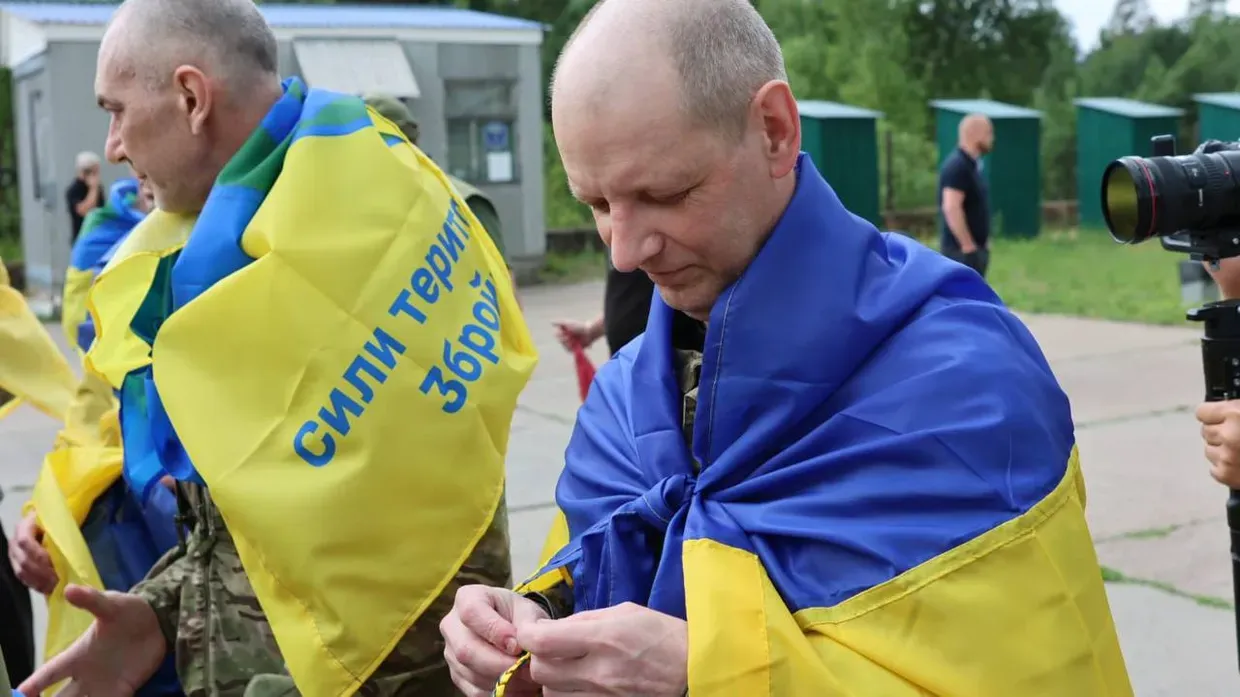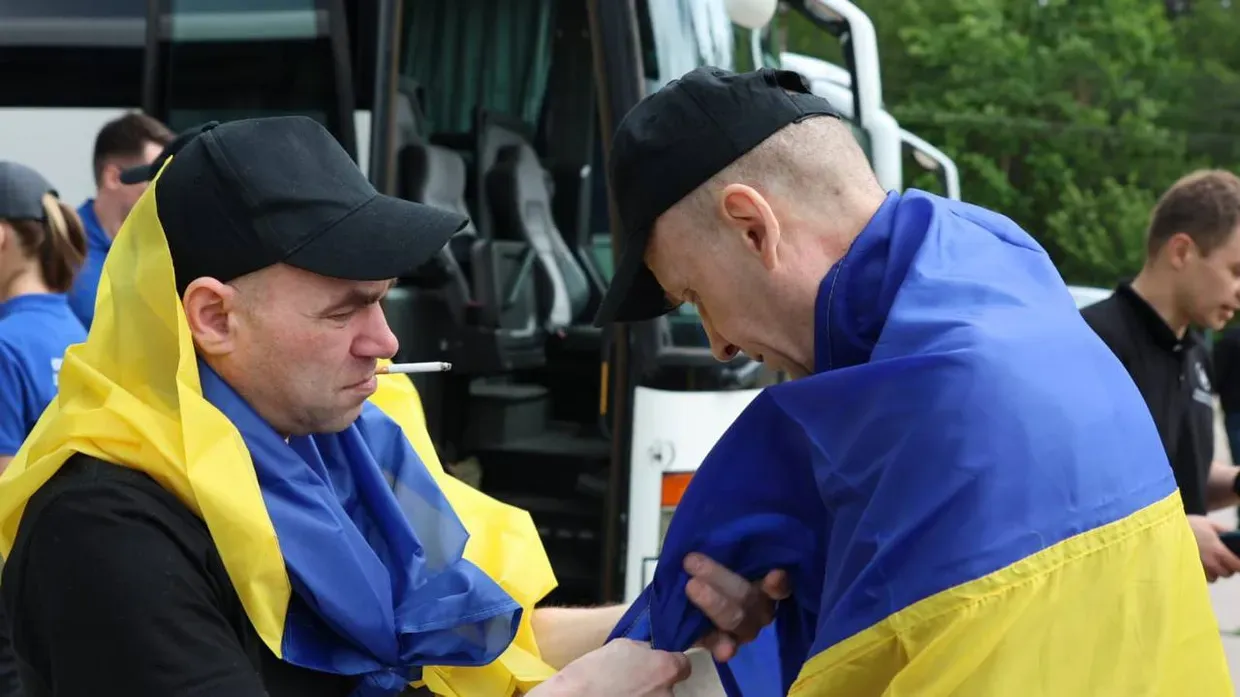Now Reading: Russia accidentally admits to its staggering troop losses in Ukraine
-
01
Russia accidentally admits to its staggering troop losses in Ukraine
Russia accidentally admits to its staggering troop losses in Ukraine

Key developments on June 19:
- Russia accidentally admits to its staggering troop losses in Ukraine
- Ukraine, Russia carry out another POW exchange under Istanbul deal
- North Korea considers sending 25,000 workers to Russia to help produce Shahed drones, media reports
- Zelensky appoints Brigadier General Shapovalov as new Ground Forces chief
- ‘Unwanted by their homeland’ — Ukraine confirms Russia returned bodies of its soldiers disguised as Ukrainian
A senior Russian official on June 19 inadvertently confirmed the staggering troop losses incurred by Moscow’s forces during its full-scale invasion of Ukraine.
In an interview with CNN, Russian Ambassador to the U.K. Andrey Kelin was asked about Moscow’s maximalist intentions in Ukraine and its ability to recruit enough soldiers to fulfill them.
Despite ongoing U.S.-led peace efforts, Russia continues to demand Ukraine withdraws from the four partially occupied regions — Donetsk, Luhansk, Kherson, and Zaporizhzhia — as a precondition for negotiations.
Meanwhile, according to figures from Kyiv, Russia has suffered more than 1 million dead, wounded, and missing soldiers since the start of its full-scale invasion.
Kelin dismissed the 1 million casualties figure but did confirm that “about 600,000” Russian soldiers were fighting in Ukraine, a number which tallies with Ukrainian estimates from January.
The number is actually lower than the 700,000 (Russian President Vladimir) Putin claimed in June 2024, and the 617,000 he claimed in December 2023.
Kelin was then asked about Russian army recruitment.
“I’m not a specialist in this area, but as I understand it we have 50-60,000 a month, those volunteers who are coming, recruiting, posting, and they would like to get engaged in this thing (in Ukraine),” he replied.
He did not explain why the size of the Russian army fighting in Ukraine has gone down despite what would amount to around 250,000 extra troops being recruited and sent to the front since the beginning of the year.
According to figures from Ukraine’s General Staff, Russia has lost 217,440 troops since Jan. 1, 2025.
The discrepancy tallies with Western analysis of Russia’s staggering losses.
“They lose somewhere in the ballpark of 35,000 to 45,000 people per month, and perhaps they recruit a little bit north of that number,” George Barros, Russia team lead at the Institute for the Study of War (ISW), told the Kyiv Independent earlier this month.
Trump’s peace push falters in both Ukraine and the Middle East — for similar reasons
U.S. President Donald Trump addressed a wide range of subjects during his inauguration speech. When speaking about international relations, he was adamant — “Our power will stop all wars and bring a new spirit of unity,” he said, talking about Russia’s war against Ukraine and the fighting in the Middle
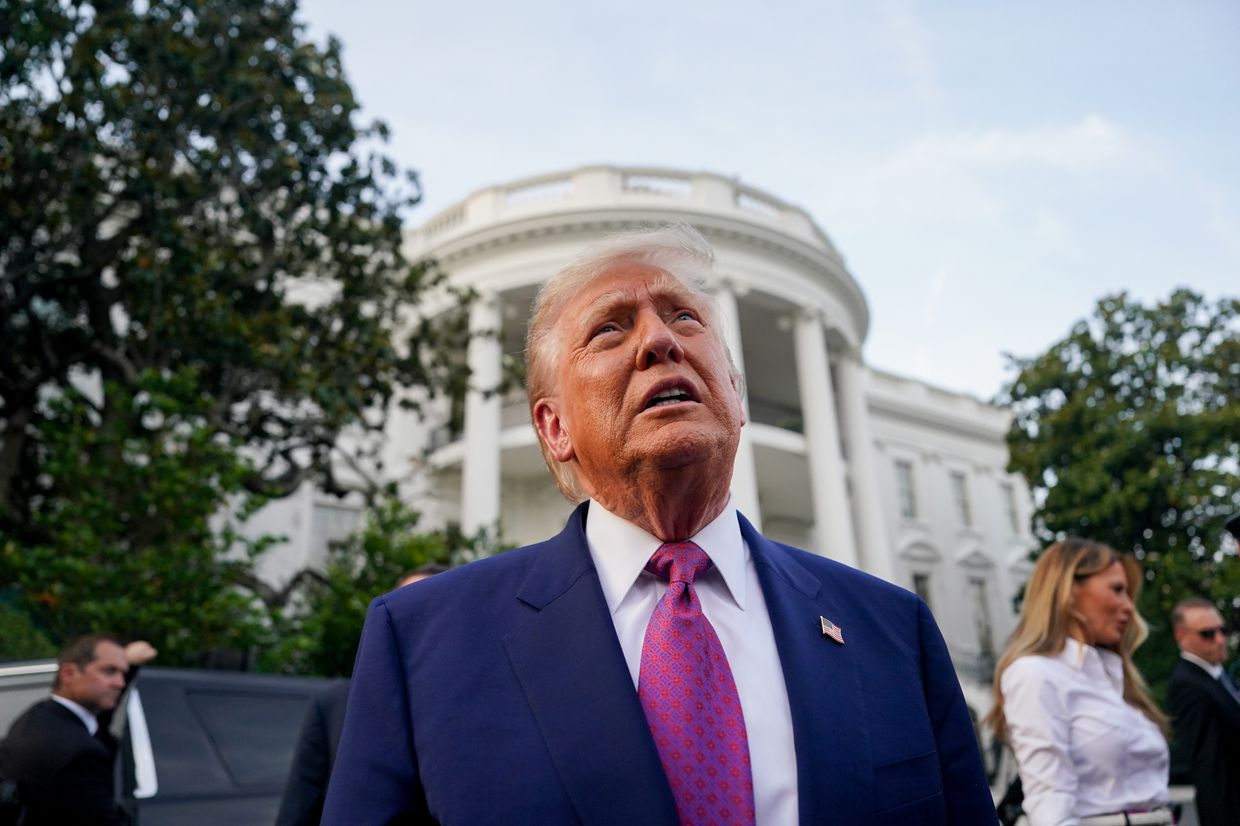
Ukraine, Russia carry out another POW exchange under Istanbul deal
Ukraine has brought home a group of soldiers released from Russian captivity, President Volodymyr Zelensky announced on June 19, marking yet another in a recent series of exchanges with Moscow.
“These are warriors of the Armed Forces, the National Guard, and the State Border Guard Service. Most of them had been held captive since 2022,” Zelensky said, without revealing their number.
The exchange follows four similar swaps carried out last week in accordance with Ukraine-Russia agreements reached at peace talks in Istanbul on June 2.
As in the other recent cases, the latest swap focused on severely ill and wounded prisoners of war (POWs), Ukraine’s Coordination Headquarters for the Treatment of POWs said.
“We are working to bring our people back. I thank everyone who helps make these exchanges possible. Our goal is to free every single one of them,” Zelensky said.
Russia’s Defense Ministry also announced a prisoner exchange with the Ukrainian side, without specifying the number of soldiers involved.
“Every defender released today has serious medical diagnoses and illnesses resulting from their injuries and captivity,” the Coordination Headquarters said.
A significant part of the released captives defended Mariupol during the Russian siege in 2022, while others fought elsewhere in the Donetsk, Luhansk, Kherson, Kharkiv, Sumy, Chernihiv, Zaporizhzhia, and Kyiv oblasts. All of them are privates or non-commissioned officers.
The oldest of the released captives was 63 years old, Ombudsman Dmytro Lubinets said, adding that another, a 45-year-old service member, was released on his birthday.
The Istanbul deal was reached during the second round of direct talks between the Ukrainian and Russian delegations in Istanbul at the beginning of the month.
While no political breakthrough was achieved, both sides agreed to a phased exchange of prisoners and the repatriation of fallen soldiers’ bodies. As part of that agreement, Russia pledged to return the bodies of up to 6,000 Ukrainian service members and citizens.
Moscow has handed over 6,057 bodies to Ukraine in several stages over the past few days. Kyiv later said these also included fallen Russian soldiers.
The June 2 agreements came after the largest-ever POW swap in late May, when 1,000 prisoners were exchanged on each side.
Ukraine repeatedly called for a prisoner exchange in an all-for-all format, but Russia continues to reject the offer.
Once firm, support for Ukraine among its neighbors wavers amid a populist surge
Fourth year into Russia’s full-scale war against Ukraine, the decisive support Kyiv found among its neighbors to the west is beginning to show cracks. Once resolute Poland is seeing rising skepticism toward Ukraine, underscored by President-elect Karol Nawrocki’s election victory. Slovakia’s pro-Ukrainian government was ousted by Russian-friendly populists in the

Zelensky appoints Brigadier General Shapovalov as new Ground Forces chief
President Volodymyr Zelensky on June 19 appointed Brigadier General Hennadii Shapovalov as the new commander of Ukraine’s Ground Forces, following the resignation of Mykhailo Drapatyi earlier this month.
Drapatyi stepped down on June 1 after a Russian missile strike killed at least 12 Ukrainian soldiers at a training ground in Dnipropetrovsk Oblast. He described the casualties as young recruits who “should have learned, lived, and fought — not died.”
Zelensky accepted Drapatyi’s resignation and appointed him Commander of the Joint Forces on June 3. An investigation into the incident is ongoing, with the Ground Forces promising accountability if misconduct or negligence is confirmed.
Shapovalov, born in 1978 in Kirovohrad Oblast, is a career officer who graduated from the Military Institute of Tank Troops in Kharkiv and later studied at the National Defense University of Ukraine. He also received training at the U.S. Army War College.
Shapovalov previously led Ukraine’s South Operational Command in 2024 and was appointed in February 2025 as Ukraine’s representative to the NATO Security Assistance and Training for Ukraine (NSATU) mission in Germany.
Drapatyi, in his final remarks as Ground Forces chief on June 11, said he had overhauled more than half of the command’s senior leadership, launched a revamp of recruitment centers, and pushed through reforms focused on decentralization, accountability, and modernization.
Zelensky said Drapatyi’s new role would allow him to focus “exclusively on combat issues” as Ukraine faces intensifying Russian attacks across several fronts.
Diplomacy in crisis: G7 letdowns reveal limits to Western solidarity on Ukraine
KANANASKIS, Canada — The Group of Seven (G7) Leaders’ Summit ended on June 17 with no joint statement in support of Ukraine, no commitments to provide desperately needed U.S. weapons, and no meeting between President Volodymyr Zelensky and U.S. President Donald Trump. The Ukrainian delegation headed into the summit,
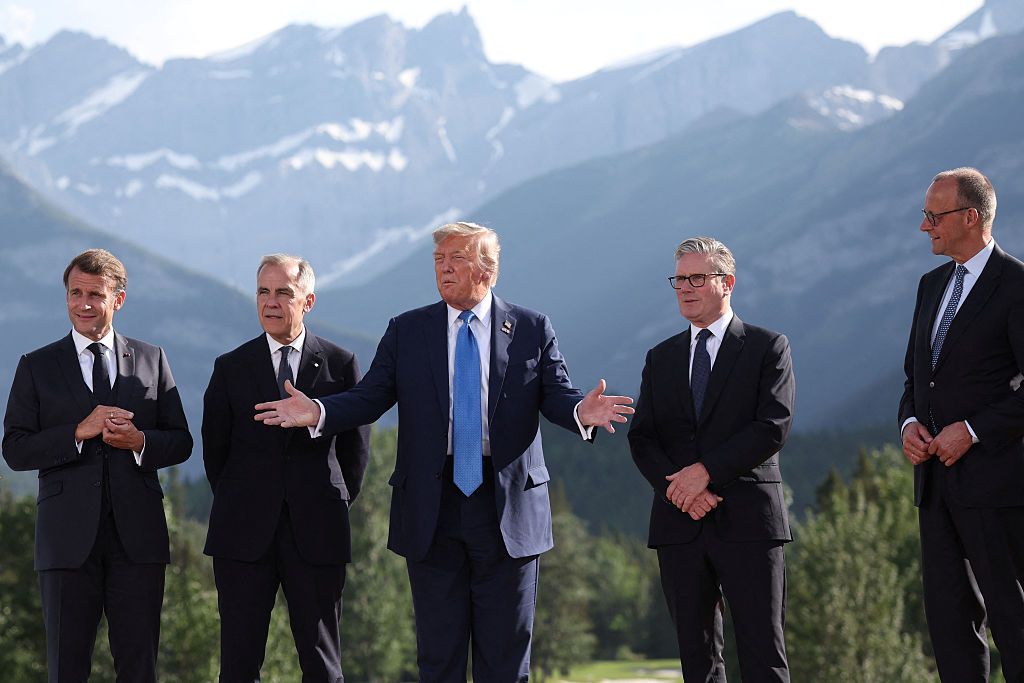
North Korea is considering sending up to 25,000 workers to Russia to assist in the mass production of Shahed-type attack drones, Japan’s public broadcaster NHK reported on June 19, citing unnamed diplomatic sources in the West and Russia.
The workers would be sent to the Alabuga Special Economic Zone in Russia’s Republic of Tatarstan, where Moscow operates a facility for assembling Iranian-designed Shahed drones. In return, Pyongyang is reportedly seeking drone operation training.
Shahed drones, known for their low cost and heavy explosive payloads, have been used extensively by Russia since late 2022 to attack Ukrainian cities. The Alabuga site has been repeatedly struck by Ukrainian forces in an attempt to disrupt production.
The media report follows a series of rapid developments in military cooperation between Moscow and Pyongyang. Russian Security Council Secretary Sergei Shoigu visited North Korea on June 17, reportedly on a “special assignment” from Russian President Vladimir Putin.
After meeting Kim, Shoigu said that Pyongyang had agreed to send 1,000 combat engineers and 5,000 military builders to Russia’s Kursk Oblast to assist in reconstruction.
Ukraine controlled a part of Kursk Oblast following a cross-border offensive in August 2024. Russia regained much of the lost territory during a March 2025 counteroffensive that included backing from North Korean forces. According to estimates, North Korea has suffered over 6,000 casualties during the offensive operations.
Ukraine’s military intelligence chief, Kyrylo Budanov, said on June 9 that Pyongyang and Moscow have agreed to start establishing domestic production of Shahed-136 drones on North Korean soil.
Kim remains a vocal ally of Putin, supplying not only soldiers but also artillery, drones, and ballistic missiles. During Russia’s May 9 Victory Day Parade in Moscow, Putin personally greeted North Korean troops, though Kim did not attend.
Tired of military aid delays, Ukraine has designed its own ballistic missile — and it’s already in mass-production
Ukraine announced on June 13 that its short-range Sapsan ballistic missile would go into mass production, a major development in Kyiv’s ongoing efforts to domestically produce the weapons it needs to fight Russia’s full-scale invasion. As Ukraine faces growing challenges in securing weapons from Western partners, and Russia continues launching

'Unwanted by their homeland' — Ukraine confirms Russia returned bodies of its soldiers disguised as Ukrainian
Russia handed over some bodies of its own soldiers to Ukraine under the guise of Ukrainian casualties during a recent exchange of the deceased, Interior Minister Ihor Klymenko announced on June 19.
“Yes, we have facts. We have established the names of these soldiers and officers who are unwanted by their homeland,” Klymenko wrote on Telegram.
The discovery was made after the handover of remains under an agreement reached during the June 2 talks in Istanbul. In total, Ukraine received 6,057 bodies of its fallen soldiers as part of the phased exchange. Russia, according to Kremlin aide and negotiator Vladimir Medinsky, took back 78.
One of the bodies returned to Ukraine, labeled No. 192/25, was dressed in a Russian military uniform and carried a Russian passport issued to Alexander Viktorovich Bugaev, born in 1974.
Alongside the passport, officials found a military ID indicating Bugaev had served in the 1st Battalion of the 39th Separate Guards Motorized Rifle Brigade.
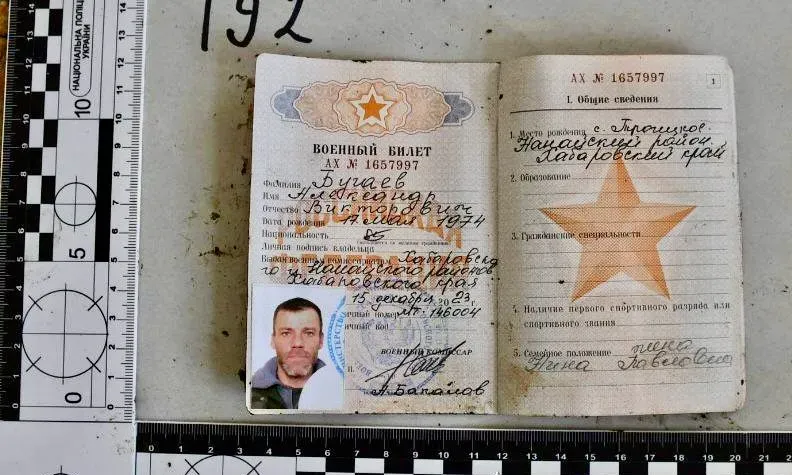
According to Klymenko, Bugaev went missing during heavy fighting near Novomykhailivka in Donetsk Oblast in March 2025. His family had been searching for him for months. Klymenko said Russia had located Bugaev’s body but chose to “dump” it among the Ukrainian dead.
“This is yet another proof of how Russia treats its people with contempt, throwing their bodies onto the bodies of Ukrainian soldiers,” Klymenko said.
“This shows how little human life means to Russia. Or maybe it’s just a way to avoid paying compensation to the families. But they will have to pay anyway: we are returning these bodies.”
The official has not mentioned the total number of Russian soldiers’ bodies given to Ukraine.
The June 2 negotiations in Istanbul resulted in the most expansive prisoner and body exchange agreement of the full-scale war, although no ceasefire was reached.
Russia accused Kyiv on June 7 of rejecting a proposed body return, publishing footage allegedly showing Ukrainian corpses stored in refrigeration units. Ukraine dismissed the claims, saying the footage was filmed on Russian territory, not at a designated handover site.
Kyiv has consistently called for an “all-for-all” exchange of prisoners of war, but Moscow has so far refused to agree to a comprehensive swap.
Note from the author:
Ukraine War Latest is put together by the Kyiv Independent news desk team, who keep you informed 24 hours a day, seven days a week. If you value our work and want to ensure we have the resources to continue, join the Kyiv Independent community.

























